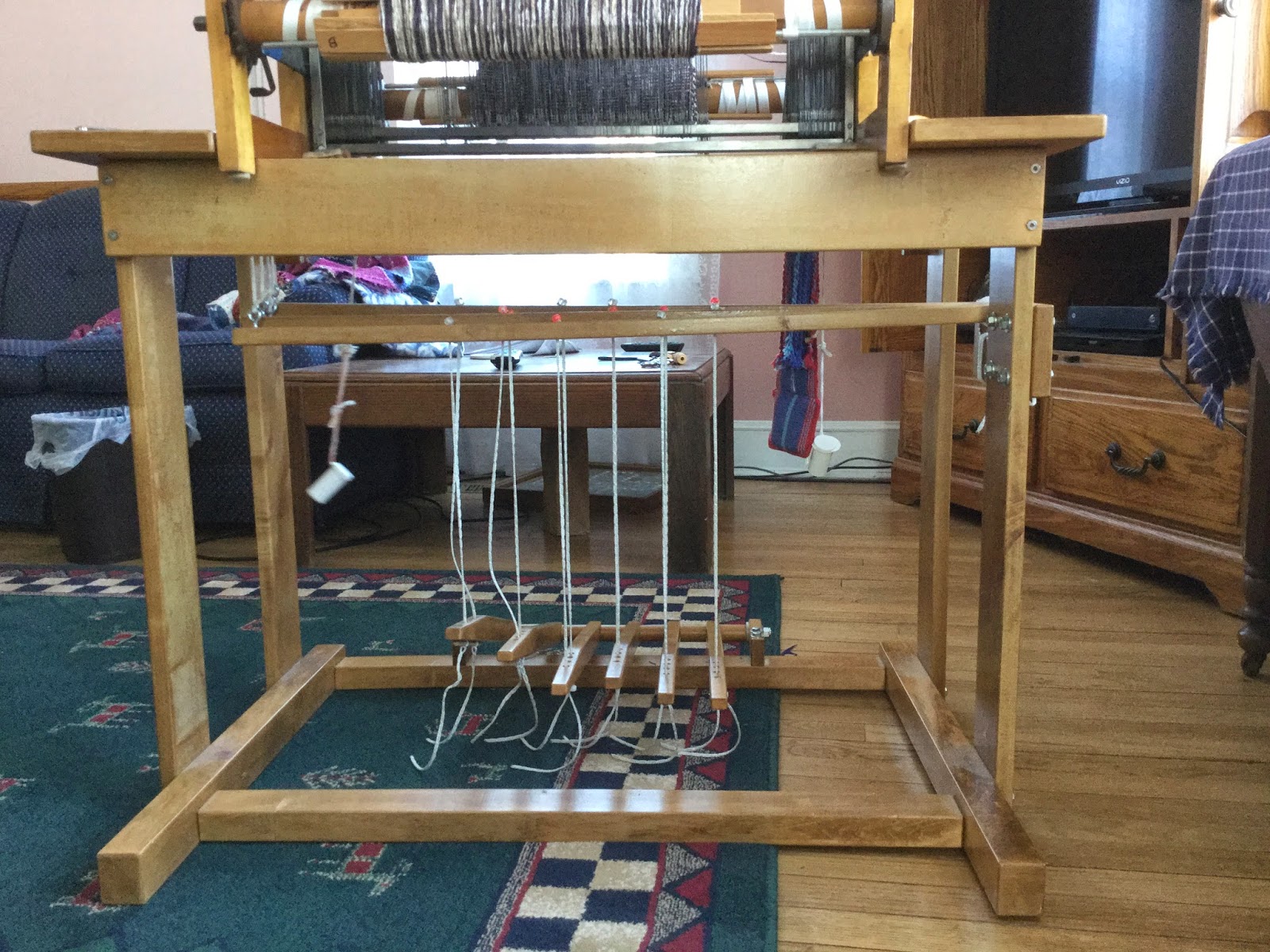Due to frustrations others and I have had transporting
this guild loom, I wrote up these instructions to try and prevent anyone else having
the same problems. Follow the instructions in the order given for ease of use. The securing ties may seem like overkill, but they beat the alternative of trying to untangle all the cables and they will make the loom easier to use.
The loom in the photos is not mine. It may have been modified and might not match other looms of its kind.
Tie shafts securely on all sides to keep them
from swinging. (Use two ties per side.)
Unclamp the metal side braces attached to the back and fold the back beam forward. Temporarily tie to the castle. The brace will be fastened later.
Unclamp the front metal braces.
The metal braces rest on the screws in the bottom wooden side pieces.
In order to fold the loom, the treadles need to be released from under the cross brace board. Push the breast beam forward slightly to tip the loom.
The treadles are now able to be raised.
Tie a couple cords around pairs of treadles near the hardware so there is something to lift them.
Unclip the treadles from the cords.
Place the front warp tie bar on top of the breast beam with slack in the tie-on ribbons.
Lift and tie the treadles to the breast beam over the tie bar so the treadles are standing upright.
Pull up on the breast beam to fold and fasten with the side bars and wing nuts. Keep the washers between the bar and wood to protect the finish. Tighten the wing nuts.Success! The loom is folded.
Unfolding the Loom
Starting with last instructions, reverse the process. Make sure the rope is over each pulley wheel when attaching the treadle clips. Also check the cables and pulley wheels at the top.
Adjusting the Shafts Before Weaving
With the loom unfolded, there may be a couple adjustments needed to get everything level and ready to weave.
Check the shafts to make sure they are level and all at the same height. The distance from the top of the level shafts and the top of the loom should be 8 1/2". If everything is level and at the correct height, the loom is ready for weaving.
If the shafts are not level, there are clamps on the cables on the right for making those adjustments. The clamps above the hooks on the shafts are not adjustable, so don't try to loosen them. The clamps on the loop ends of the cables on the right side are adjustable and are used to make the shafts level.
To level the shafts, first slide the clamps up on the cables.
Grasp both sides of the loop and pull one side up and one side down on the cable. The right end of the shaft will raise or lower. Adjust it until it is level. Continue with the other three shafts.
Once the four shafts are level, slide the clamps down to the "s" hooks as tightly as possible to lock the adjustment in place.
One final adjustment may be necessary. If the shafts are not all at the same height, the adjustment is made with the turnbuckles on the treadles. It won't take many turns to change the height of each shaft.
Once the height is adjusted, it is time to weave. Happy weaving!











































.JPG)